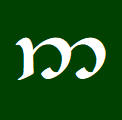4.37 Foot Q. runya n. “slot, footprint” A noun in The Etymologies of the 1930s glossed “slot, footprint” derived from the root ᴹ√RUN “flat of hand or sole of foot” (Ety/RUN). Q. tál n. “foot; [ᴹQ.] bottom, [ᴱQ.] lowest part” The Quenya word for “foot” derived from the root √TAL
Paul Strack
Select Elvish Words 4.35-4.36: Leg, Knee
4.35 Leg Q. attalya n. and adj. “biped, *(lit.) two-footed” A noun or adjective meaning “two-legged”, attested only in its (noun) plural form attalyar (WJ/389). It is a combination of atta “two” and tál “foot”, with the adjective suffix -ya¹. Conceptual Development: In the Qenya Lexicon from the 1910s, there
Select Elvish Words 4.34-4.342: Finger, Thumb (Sindarin)
4.34 Finger S. leber n. “finger” The Sindarin word for “finger”, derived from primitive ✶leper and based on the root √LEP “pick up” (VT47/10; VT48/5). Conceptual Development: Tolkien used various Elvish words for “finger” over his life, but most were based on the root √LEP. The Gnomish Grammar and Gnomish
Select Elvish Words 4.34-4.342: Finger, Thumb (Quenya)
4.34 Finger Q. leper n. “finger” The Quenya word for “finger” appearing in various notes on Eldarin Hands, Fingers and Numerals from 1968, derived from the root √LEP “pick up” (VT47/10; VT48/5). Conceptual Development: The Quenya “finger” words went through quite a few conceptual changes, but they were always based
Select Elvish Words 4.332: Hand (other)
4.332 Hand (other) Q. ataformaitë adj. “ambidextrous” A word for “ambidextrous” in the so-called Ambidexters Sentence written in 1968, replacing various alternate forms like at(t)aformor and attaformaitë (VT49/6-8). As pointed out by Patrick Wynne, this word is a combination of at(a)- “double” and formaitë “right handed”, analogous to the Latin
Select Elvish Words 4.33: Hand
4.33 Hand Q. camba n. “(cupped) hand, hollow of the hand” A word for “hand” in notes on Eldarin Hands, Fingers and Numerals from the late 1960s, based on the root √KAB “hold, contain, retain” (VT47/7-8). Tolkien said that it “referred to the whole hand, but as flexed, with fingers
Select Elvish Words 4.30-4.32: Shoulder, Arm, Elbow
4.30 Shoulder ᴱQ. almo n. “shoulder, ⚠️back” The word ᴱQ. almo or aldamo “back, shoulders” appeared in the Qenya Lexicon of the 1910s under the early root ᴱ√ALA² “spread”, and the longer form was an element in the name ᴱQ. Aikaldamor “Broad Back” (QL/29). This pair of words (along with
Select Elvish Words 4.28-4.29: Neck, Throat
4.28 Neck Q. axë n. “neck [vertebrae], *(upper) spine; rock ridge” A word for “neck” appearing in notes written around 1967 as akse with (archaic) variant akas, derived from the root √AKAS “neck, ridge” (PE17/92). Tolkien specified that it was “referring properly only to the vertebrae (the bony part of
Select Elvish Words 4.25-4.27: Lip, Tongue, Tooth
4.25 Lip Q. pempë n. “lip” A word for “lip” appearing only in its plural form pempi in 1964 notes on the parts of the mouth, where it was related to Q. pé “the closed mouth” (PE17/126). In 1968 notes on monosyllabic nouns, Tolkien said the primitive ✶pē “lip” was
Select Elvish Words 4.24: Mouth
4.24 Mouth Q. anto n. “mouth [as a thing for eating]; ⚠️[ᴱQ.] jaw” The basic Quenya word for “mouth”, appearing as the name of tengwa #13 (4) in The Lord of the Rings Appendix E (LotR/1123). It is likely derived from the root √MAT “eat” from primitive *amtō, and hence




